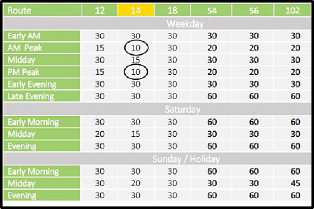A simple 4 km bus journey to the hospital under the current model will be four times longer and more time-consuming under the proposed model.
- • This added complexity will undoubtedly encourage more travel by car.
- • It will affect patient outcomes for those who are dependent on public transit for their transportation needs.
- • For those with impaired mobility, transfers during inclement weather will be especially onerous.
Is it possible that Windsor Regional Hospital was overlooked as a key stakeholder?
A description of the community outreach and engagement for the project is described in the transit master plan on page 15.
Telephone interviews were conducted with "internal and external key informants." Windsor Regional Hospital doesn't appear on the list.
- • Is it possible that Windsor Regional Hospital, the region's second largest employer, undertaking its $2 billion healthcare overhaul, was overlooked as a key stakeholder?
- • Or did Windsor Regional Hospital fail to convince the transit consultants about the requirement to integrate direct transit routes to the hospital?
3. Looking at the alternatives: could better and more cost-effective transit service be provided if the hospital is located closer to densely populated established neighbourhoods?
For example: Six of the new routes will run by the GEM site on Tecumseh Road East.
- • Route 14 buses, originating in downtown Windsor, will be scheduled every 10 minutes at "peak" times on weekdays. This route also stops at the Ouellette/UCC site.
- • Numerous additional transit routes pass through the East End Terminal at Tecumseh Mall (the East End Terminal is 600m east of the GEM site)



_______________________________________________________ A Costly Proposition: Flaws in Transit Windsor's New Master Plan Citizens for an Accountable Mega-hospital Planning Process